Grainy photos can be a source of frustration for the professional and amateur photographer alike. Whether you refer to it as grain or noise, nothing can quite spoil your shot like the dusty, gritty appearance of the grain. So what can we do to dispel the dreaded grain from our photos?
How do I keep my photos from being grainy? The easiest way to reduce grain is to lower your ISO setting. Some overall tips to keep in mind to reduce grain:
- Lower your ISO setting
- If you have to shoot at a high ISO setting, slightly overexpose the photo
- Use a flash or increase the ambient light in the environment
- If you are reducing grain in a photo editing software, be sure not to overcorrect to the point where an image becomes flat and lifeless
These tactics can be used immediately to lower the amount of grain in your photographs, but there are some situations in which they might not apply or may need to be tweaked slightly in order to achieve the photo you want. Understanding what grain is and why adjusting these settings helps reduce it can be super helpful to photographers looking to improve their photos and become more skilled at their craft.
How Do I Stop My Photo From Being Grainy?
The first step to achieving a less grainy photograph is usually to lower the ISO setting. While increasing the ISO will allow you to work with less light, the downside is it will often give you more grain.
Slowing the shutter speed of the camera can also permit more light to reach the camera’s sensors, meaning even less opportunity for grain to spoil the picture, but you have to be cautious with this tactic. A slower shutter speed requires either a very steady hand or a stable tripod to avoid the photo coming out blurry. No one wants a blurry photo, even if it is grain-free.
Widening the camera’s aperture setting a little can also aid in reducing grain by permitting more light to reach the sensors. The aperture determines how open or how closed we want the camera’s lens iris to be. A wider aperture means more light because the iris opening is larger so more light can pass through to the camera’s sensor.
Keep in mind, changing the aperture can affect your depth of field. Widening the aperture will create a narrower depth of field, meaning only isolated subjects will be in focus, which may not be what you want, especially if you are trying to capture a wide scene such as a landscape.
It is helpful to practice taking photos with your camera in different ISO settings in order to get a feel for how it affects the resulting image. Be sure to experiment with differently illuminated scenarios in order to see how different ISO settings can drastically alter the photograph produced.
What Is Grain And Noise?
Grain, also frequently called noise when referring to digital images, is essentially pixels that don’t represent the actual colors or light levels of the intended photo subject. It gives photos a gritty, dull, dusty appearance that can degrade the quality of the image.
This tends to happen more frequently with photos taken in lower light levels. The camera’s sensor has difficulty pulling enough information from the scene and thus it has difficulty recreating it accurately, so when in doubt the sensor will estimate what a pixel should possibly be based on the scarce information it received and the pixel produced often appears rogue in comparison to the pixels surrounding it.
What Causes Grainy Photos?
The most common culprit to blame for causing grain in a photo is an incorrectly set ISO. The ISO refers to a film’s sensitivity to light, but in the age of digital cameras we can now think of ISO as the sensitivity level of the camera’s image sensors. So, the ISO setting is a unit of measure indicating just how sensitive we want our camera to be to light.
As a general rule, a lower ISO setting will result in the camera’s sensor trying to take in much more light, therefore producing a less grainy photo. Alternatively, a higher ISO setting means the camera’s sensor does not have the obligation to collect as much light in order to make the correct exposure, so using too high of an ISO in the wrong situation, such as a low light setting, can result in very grainy photos.
ISO settings are usually listed in factors of 2, such as ISO 100, ISO 200, ISO 400, and the values can have a wide range depending on the type of camera you are using. Digital cameras allow us to change the ISO setting with every photograph we take, should we so please.
The ISO setting will often need to be adjusted based on other settings on your camera such as the aperture and shutter speed, but regardless of these factors the overall rule of ISO still generally applies: a lower ISO setting will result in a less grainy photo.
Not All Image Grain Is Created Equal.
Grain in photographs can come from a number of different sources and so there are different types of grain that can appear in your photos. Understanding the different types of grain can help with eliminating it from your photos.
Sometimes you can have grain simply due to how photons of light emanating from a light source can vary in their emission. The easiest way to address this is to make sure more light overall reaches the camera’s sensors, which we discussed in the previous sections.
Some grain is created from the camera’s sensors being overheated, which can occur if shooting in a very low light setting. There are ways to address this sort of grain which we will cover later in this post in a section called “Why Do My Night Photos Still Seem Grainy, Even With the Right ISO Setting?”
If a digital camera is not properly calibrated, sometimes grain results from the pixels being slightly out of uniformity. Some pixels may be slightly more or less sensitive than their neighboring pixels, which can result in the appearance of fine-grain.
Are There Any Situations Where I Shouldn’t Use a Low ISO Setting?
It makes sense to think that if you don’t want grainy photos, you would simply always shoot with a low ISO setting. But in truth, you want to use the lowest ISO setting needed for the desired shutter speed, which sometimes needs to be fast in order to capture our subject. As such, there are situations in which the ISO setting will need to be higher due to a need for faster shutter speed.
Imagine a situation in which you are trying to photograph a subject at night or in a dark room and you don’t want to use a flash (more on that later.) In this scenario, you will definitely need a fast shutter speed or else your photo will be blurry. You will also want to increase the aperture in order to allow as much light as possible to reach the camera’s sensors.
At a certain point, however, the aperture can’t get any wider and you don’t want to sacrifice sharpness by slowing your shutter speed too much. At this point, you need to consider increasing the ISO setting.
Alternatively, if you are shooting on a very sunny day or in a brightly illuminated room you can feel free to keep your ISO setting as low as possible. Plenty of light will be reaching the sensors in this scenario, and often you will actually want to keep your shutter speed on a faster setting, as well, so you don’t risk overexposing the photo.
Remember: a slower shutter speed means longer opportunity for light to reach the camera’s sensors, so in a very bright setting this might cause overexposure and bleach out our subject.
Do I Need to Change Other Settings on My Camera When I Change the ISO Setting?
Because of the relationship between aperture, shutter speed, and the ISO setting, these three factors are often referred to as the “Exposure Triangle.” Adjusting one of these settings usually requires adjustment of the other two settings in order to achieve an appealing, properly exposed photo.
As you raise your shutter speed and aperture, you may need to raise your ISO setting as well. You may need to take a few practice photos to get the desired setting just right.
As a general rule, you want to shoot with the lowest ISO needed in order to achieve the shutter speed required for the situation. Sometimes, it is preferable to have a slightly grainy image with a sharp, defined subject than a blurry subject without grain.
If you’d like to know more about the Exposure Triangle and a more in depth explanation of how these three settings affect each other, check out a great detailed description here.
How Do I Reduce Grain If I Need to Take a Photo With a High ISO Setting?
There will inevitably come a time when the situation requires a high ISO setting in order to capture a shot. But don’t despair! There are some helpful tips you can use to still reduce grain, even when using a high ISO setting. To start, try taking your photograph with a slightly slower shutter speed.
A slower shutter speed will result in a slightly overexposed photo. Grain tends to be more noticeable in darker, shadowed areas of photographs, so by slightly overexposing you will reduce the shadows and make the grain less noticeable. Also, a slightly overexposed photo can later be edited in a photo editing software to correct the light levels and the grain will still be less noticeable.
Trying to edit underexposed photographs in an editing software in order to bring up the light levels will actually result in the photo looking even grainier. We certainly don’t want that! So, in these situations, aim for a photo being slightly overexposed rather than underexposed.
Using a Flash Can Help Reduce the Chance of Grainy Photos.
If you find you are having to shoot with a high ISO setting, chances are it is because your subject is poorly illuminated. Since a brighter scenario would permit you to use a lower ISO setting, a simple solution is to introduce more light into the environment. The easiest way to do this is to use a flash.
Using a flash can produce extra ambient light which would allow you to lower your ISO setting, thus reducing grain in your photographs. However, a direct flash, such as the standard pop-up flash on most cameras, can often be too harsh and wash out subjects or give the never pleasant red-eye effect. So what can we do?
Using a flash attachment is preferable because these can be angled so as to bounce the flash off ceilings or walls in order to provide more ambient light without creating a harsh effect. Many professional photographers even invest in flashes mounted on off-camera light stands in order to achieve even more versatility with lighting the scene.
Nevertheless, keep in mind that there are some situations in which using a flash may not be possible. Venues such as museums or churches often have strict rules against the use of flash photography. Flash may also not be appropriate in any setting where it may cause distress or distraction, such as taking photos in a hospital delivery room during the birth of a child or during a symphony concert performance.
Why Do My Night Photos Still Seem Grainy, Even With the Right ISO Setting?
Sometimes, even when shooting at an ISO setting that would normally function fine with your camera, night photos may consistently seem grainy. This may actually be due to a technical malfunction of the camera you are using.
When shooting in low light, such as at night, you have to reduce the shutter speed in order to let more light reach the camera’s sensors. However, these longer exposure times can actually cause the camera’s sensors to overheat, which can result in malfunctioning pixels that take on incorrect colors and light levels, in other words, the dreaded grain.
These malfunctioning pixels are sometimes referred to as “hot pixels.” If this seems to be the case with your night photos, it may be worth actually trying a slightly higher ISO setting with a slower shutter speed. You can also try shooting at a slightly faster shutter speed.
Some cameras now come with software installed to specifically address the problem of overheating sensors and subsequent grain on long exposure shots. It is called Long Exposure Noise Reduction or High ISO Noise reduction. More on it next.
What is Long Exposure Noise Reduction and How Can It Keep My Night Photos From Being Grainy?
Some newer digital cameras actually have software built in to try to address the issue of grainy night photography. It is called Long Exposure Noise Reduction or High ISO Noise Reduction.
When active, the camera basically takes two photos. It records the photo with the settings you have specified and it records a second, much darker photo. Then it compares these two images and finds the average between the two, removing any rogue pixels from your original image and thus reducing the grain on your long exposure photos.
Long Exposure Noise Reduction is not perfect, mind you. It can take up to double the time to take a photo when it is enabled. This may not seem like that big of a deal, but if you are taking 30 second exposures, it means you’ll be waiting at least a minute per photo. Now imagine you are taking a 5 minute exposure, and you’ll be waiting 10 minutes.
So if you sit and take photos for an hour, you’ll be lucky to get 6 photos. Not everyone has the time or patience to work with Long Exposure Noise Reduction. To learn more about the pros and cons of Long Exposure Noise Reduction, a great summary can be found here.
Will Getting a Better Camera Help Me Take Better Pictures?
The type of camera you are using can also drastically affect the amount of grain you have. If you have adjusted your settings appropriately and you still see a lot of grain, examine the model of camera you are using.
Some camera models have more internal noise due to inferior technology systems. Perhaps surprisingly, owning a camera with more megapixels can actually be working against you when it comes to image noise.
Thanks to modern marketing, a lot of us automatically assume more megapixels automatically means better photos. Unfortunately, this isn’t really the case. A camera’s megapixel count describes the number of pixels it can capture on its sensor.
If the camera has more megapixels than the camera’s sensor can comfortably handle, then you are more likely to have grainy, less crisp photos. According to geek.com, most non-professional consumers don’t require a camera with greater than 8 or 10 megapixels.
Can I Fix My Grainy Photographs With a Photo Editing Software?
What if we did everything we could and the photo still looks grainy? Oh no! Can we fix it in post?
To fix the photos there are Apps that use artificial intelligence, and get really good and surprising results. Also if you have any photo that comes out blurry take a look at this article to fix it.
Luckily, most photo editing software worth their salt have tools available to reduce noise. Sometimes, even when you’ve done your best to have the settings just right, your photo still ends up gritty and grainy. This is when having a good photo editing software such as Lightroom or Photoshop can really help clean up your pictures.
Be cautious of relying too much on these features or of going overboard using them. Often, when reducing noise too much in these programs, it can result in an unrealistic, plastic looking image because you lose the visibility of natural textures. It is important to find the right balance that reduces grain but also doesn’t make the image flat and lifeless.
Also, keep in mind with these various pieces of software that lightening shadows or increasing exposure can actually induce grain or make it worse. This is why we want to err on the side of taking slightly overexposed photos if we think we are going to need to edit out grain later.
On the other hand if your iphone photos come out black in this article we help you to solve it.




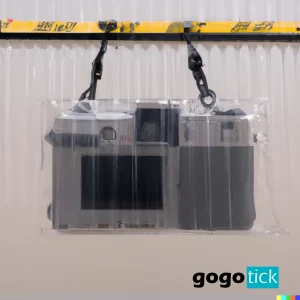

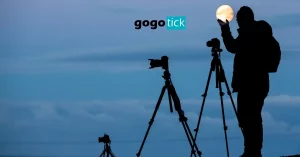






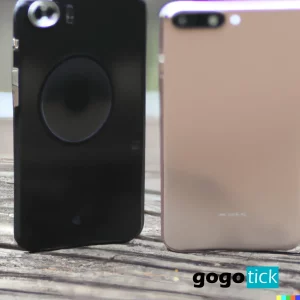



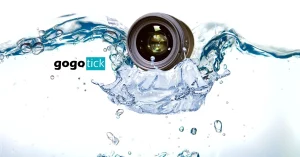






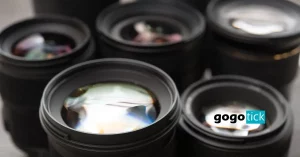











1 comment
188bet
Wow, fantastic blog layout! How long have you been blogging for?
you make blogging look easy. The overall look of your site is magnificent,
as well as the content!